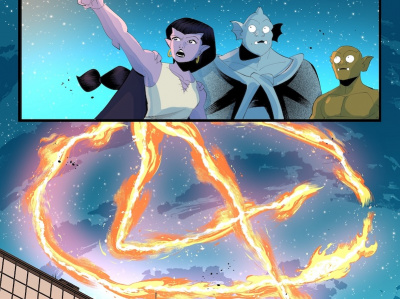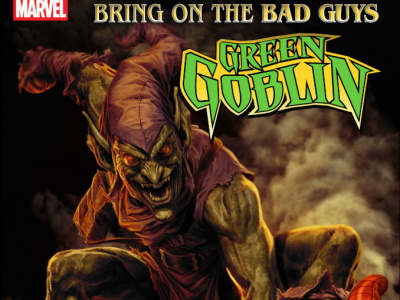
We recently caught up with Associate Publisher of Del Rey Manga, Dallas Middaugh. In Part Three, we talk about the upcoming Marvel-Del Rey projects, Del Rey's publishing plans for books about manga, and the definition and categorization of manga. In Part One, we talked about the state of the manga and graphic novel market so far this year and Del Rey’s place in it as well as the challenges of limited shelf space. In Part Two, we talked about Del Rey’s mix of original English language and Japanese licensed material, the Del Rey and Del Rey Manga imprints, the impact of Kodansha’s plans to publish in the
You referred earlier to your collaboration with Marvel. Is that still on track for early 2009?
Yes, that’s going great. I’m the editor on the Wolverine manga, so I’m intimately involved with that one, but I’ve also seen the pages for the X-Men shojo manga that we’re doing, and I’m really excited. The work we’ve got coming from all of our creators is really top notch.
Who is going to distribute the Marvel books and what imprint will be on them?
Those are going to be Del Rey Manga and distribution will be through Random House.
You’ve also done some books about comics--the Jason Thompson book and the Clamp book. Is that an area that’s going to get more attention from Del Rey in the future?
We don’t have any other book specifically planned beyond those two. Certainly we’re really happy with the response. I was editor on the Complete Guide to Manga that Jason Thompson did and I was exceptionally happy with that book. We got nothing but positive reviews. I was really happy with the sales on it. It’s kind of hard to know what the follow-up to that book would be though, since it’s a comprehensive list of all the manga released in the
Going back to the graphic novel space. There’s been a lot of blurring of the lines between Japanese manga and manga-inspired work produced in the
That’s a tough one, because there are a lot of different answers for it. The simplest way is to say that manga should be defined as comics from
I had a really good conversation with someone at the Comic-Con. This is person from
So was the Dean Koontz book Del Rey Manga or just Del Rey?
We released that under Del Rey, although to be honest I’m glad you asked that, because although we do technically have another imprint, Del Rey Manga, we don’t actually treat it as such. We have a trade dress that we use for the Del Rey Manga books, but they also just carry the Del Rey logo, the same as a Terry Brooks or a Star Wars novel. So at the end of the day, they’re really all just Del Rey books. In this particular case, we didn’t give it the manga trade dress and that was really because of the Dean Koontz connection.
Let’s go at the “what’s manga and what’s not” question another way: how do you think retailers should rack manga-style material that’s produced by creators outside of
That’s a really, really tough one. There are a lot of things that get in the way of racking manga differently. Manga in
My own feeling on it at this point is that manga is manga. If it looks like manga, if it feels like manga, it should all be in the same section. And until somebody comes up with a better way or until awareness of manga is much broader and deeper than it currently is, I think the system we have works all right.







